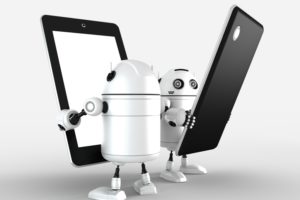Our factories, warehouses, offices, and homes have a big debate about the possibility of machines in learning how humans do. Technologies include Artificial Intelligence, Machine Learning, and Deep Learning, as well as quick-mindedness and enthusiasm. These deep practices are turbulent and these 8 practical examples help you to explain the actual use of deep technology today.
What is Deep Learning?
Artificial Intelligence (AI) is usually capable of performing human intelligence. This includes machine learning. Here, the machines can learn through experience and gain skills without human intervention. Deep Learning is a subset of machine learning, where artificial neural networks, algorithms inspired by human brains, from large quantities data.
Similarly, how we learn from experience, the deep learning algorithm will work continuously and improves the result every time. Suggestions about ‘deep practice’ involves different (deep) layers that are able to learn neural networks. Any idea of what to do is “learn” to learn to solve deep learning about the problem. The data we generate every day is staggering. Currently, the estimation reaches 2.6 quintal bytes. It is a source of deep learning.
Deep Learning Algorithms requires a ton of data to learn.
This increases in data creation have increased in profound learning skills in recent years. Deep learning algorithms benefit as a service to expanding artificial intelligence (AI), as well as the potential computing power available today. AI, artificial intelligence technology as a service has given importance to smaller companies and essentially AI algorithms are needed for deep learning, regardless of large investments. Deep Learning machines also allow complex problems to be solved when using a very different, structured and inter-dataset. More deep learning algorithms will learn to be good.
8 practical examples of deep learning:
We’re in the process of learning machines to solve complex problems without human intervention, right? The deep practice here is that some algorithms that support today and the algorithms continue to learn by learning through the infusion of inventory data.
1. Virtual Assistants:
Whether it is Alexa or Siri or Cartagena, Virtual Assistants of online service providers uses deep speech. This helps you understand your speech and the languages that they use when they speak with humans.
2. Translations:
Likewise, deeper learning tables can be automatically translated between languages. It is strong for passengers, businessmen and those in government.
3. The vision for Driverless Delivery Trucks, Drones and Autonomous Cars:
An independent vehicle understands road realities and responds to how it responds to the street or ball through a deep learning algorithm, whether it’s a stop sign. More data received by algorithms, better to know their information process, and a snow-covered stop is still a stop mark.
4. Chat and Service Bots:
Thanks for deep training in hearing and text questions to respond to a clever and helpful way of chat boats and service bots that provide customer service for many companies.
5. Image depiction:
Black and white paintings change the color of the human hand in the past. In today’s deeper learning algorithms can use context and objects in the film. Primarily, black-and-out results are impressive and accurate.
6. Facial Identity:
Deep Learning is used to tag people on Facebook posts, not to just for security requirements for facial recognition. We can pay the goods in stores by using our faces in the near future. Challenges related to deep learning algorithms for facial recognition also identify the same person when changing the hairdo. It is poor due to bad lighting or barriers if grown up or chopping or shot.
7. Medicine and Pharmaceuticals:
For the gene of a person who is specially designed for personalized drugs for disease and tumor diagnosis, the deep practice of medicine has the attention of the largest pharmaceutical and medical institutions.
8. Personalized Shopping and Entertainment:
When are you wondering what Netflix comes for suggestions for what you see next? Or Amazon comes with ideas for what you need to buy next and those instructions do you know exactly but never before? Yep, it’s a deep learning algorithm at work. Get more in-depth learning algorithms, the better they become. This is an exceptional few years since technology is mature.




